A decade ago, the average B2B content strategy was built around gated whitepapers, three-minute explainer videos, and the odd email nurture series. Today? Buyer expectations have changed – and so has the way they consume content.
In 2025, attention is a premium currency, and B2B audiences aren’t looking for more information – they’re looking for relevance, usability, and trust. That means content strategies need to evolve, not just in message and tone, but in format.
The smartest marketers are rethinking everything from structure to channel. Here are seven B2B content formats that are actually getting consumed – and converting – in today’s crowded market.
1. Newsletter essays with a point of view
Newsletters are no longer just roundups of your latest blog posts. The best-performing B2B newsletters in 2025 resemble personal essays – tight, opinionated, and written with clear editorial voice.
Whether sent from the CEO, CMO, or a subject-matter expert, these emails are punchy, focused on a single idea, and delivered in plain language. They offer commentary, not just curation, and position the sender as a trusted guide through complexity.
Marketers like Dave Gerhardt, April Dunford, and Amanda Natividad have shown how newsletters can scale both credibility and community. Smart B2B brands are replicating that model – bringing expertise in-house and giving it a direct channel to buyers’ inboxes.
Why it works: It feels personal, delivers value quickly, and builds parasocial trust with the reader – critical for long sales cycles and complex decisions.
2. Micro-case studies, not war-and-peace PDFs
Traditional case studies are often bloated, overly polished, and too focused on vendor glory. The modern buyer doesn’t want to read 1,000 words about how “Client X achieved transformation.” They want the story behind a specific challenge – and they want it fast.
That’s where micro-case studies come in. These are sharp, skimmable write-ups – often under 300 words or in video form – highlighting one clear before-and-after, the tactic used, and what changed. No fluff. Just proof.
They’re often distributed via LinkedIn posts, sales emails, or even as on-site pop-ups for bottom-funnel visitors. The goal is practical insight, not theatrical storytelling.
Why it works: Buyers want evidence that your product or service works for someone like them, in situations like theirs. Micro-case studies deliver that credibility in digestible, shareable chunks.
3. Interactive demos and sandboxes
In a product-led world, B2B buyers increasingly want to experience before they engage. They don’t want to “book a demo” – they want to explore your tool themselves.
Enter interactive demos, product sandboxes, and guided walk-throughs. Platforms like Walnut, Reprise, and Navattic allow marketers to embed self-guided product experiences directly into content pages or nurture sequences. This reduces friction, shows value faster, and pre-qualifies serious interest.
Companies like ClickUp, Datadog, and Figma have used interactive product tours to fuel both inbound pipeline and product education. These B2B content formats have become especially popular in SaaS, where buyers want to test usability and relevance before ever speaking to sales.
Why it works: B2B buyers are tired of high-pressure demos and generic slide decks. Letting them “play” with your solution creates confidence, speeds up qualification, and builds momentum internally.
4. Voice-led LinkedIn carousels
The carousel post has quietly become one of the most effective B2B content formats on LinkedIn. But the real winners in 2025 are those that combine structured insights with personality – turning carousels into mini editorials, not just listicles.
These aren’t recycled blog headlines or SEO filler. The best carousels walk the reader through a viewpoint – perhaps explaining a common mistake, breaking down a trend, or showing behind-the-scenes logic behind a company’s decision.
Because carousels take up more screen space and reward curiosity (you have to click to continue), they perform better in LinkedIn’s algorithm – and even more so when they come from individuals, not brand pages.
Why it works: Carousels feel native to the platform, visually engaging, and intellectually snackable. When paired with a strong personal voice, they build trust and attention simultaneously.
5. Video clips with context, not just commentary
Video remains a top-performing content format – but what’s changed is the emphasis on context. Today’s B2B video buyers don’t just want someone talking into a camera. They want demonstrations, breakdowns, or walkthroughs with a clear purpose.
Think less “talking head,” more “explain this thing I’m trying to figure out.” Product teardown? Great. Sales objection breakdown? Perfect. Live Q&A with a technical lead? Even better.
Short-form clips (under two minutes) are working well on LinkedIn, while longer cuts are thriving on YouTube and embedded into resource libraries. Some brands are even repurposing sales calls or Slack conversations into explainer-style videos with captions and callouts.
Why it works: It gives viewers a reason to care, a face to trust, and a takeaway to remember – all within a format that’s scannable on the go.
6. One-page frameworks and toolkits
Not everything needs to be long-form. In fact, some of the most bookmarked and shared B2B assets are simple one-pagers: decision-making frameworks, checklist PDFs, ROI calculators, or quickstart guides.
These pieces don’t try to tell the full story. They solve a slice of the problem. For example, a GTM maturity matrix, a job description template, or a quarterly content planning worksheet.
They’re often distributed via email CTAs, used as sales enablement tools, or featured in webinars. Because they’re actionable and immediately useful, they build credibility and often drive revisits.
Why it works: It shows you’re here to help, not just to sell. That earns attention – and often, inbox space.
7. Event recaps and POVs from your own team
In 2025, buyers are overwhelmed with vendor content – but still crave insider insight. One increasingly effective B2B content formats is the internal POV recap: a blog, video, or post from someone at your company sharing what they learned at a recent event, conference, or customer meeting.
These pieces don’t need to be elaborate. A senior marketer recapping three themes from Cannes Lions. A sales lead explaining what buyers asked about most at a trade show. A founder sharing takeaways from an industry dinner.
When written with honesty and curiosity, they feel timely, useful, and uncontrived. They also signal that your team is in the mix – not just watching from the sidelines.
Why it works: You’re giving buyers a shortcut to industry insight and positioning your team as part of the conversation, not outside of it.
B2B content formats aren’t just design – they’re strategy
Too many B2B content formats are used only as a finishing touch. But in reality, format determines how a message is received, how far it spreads, and whether it actually influences buying behaviour.
As attention spans shrink and buyer sophistication grows, the future belongs to formats that prioritise clarity, usefulness, and human connection. Whether it’s a three-minute explainer, a 300-word customer story, or a single carousel post with a killer hook – what matters most is whether the content is actually worth consuming.
If your current strategy is built around formats that no longer perform, it might be time to start here.
Want the latest B2B marketing news straight to your inbox? Subscribe to our free weekly newsletter!
Interested in sales, marketing or business skills courses and training? Check out our training partner, Learning Room.


 Whether you want to learn how to use LinkedIn, X or Facebook for marketing, or need to brush up on business skills like leadership, presentation skills or managing meetings, you will find something to enhance your professional skills with these on-demand courses.
Whether you want to learn how to use LinkedIn, X or Facebook for marketing, or need to brush up on business skills like leadership, presentation skills or managing meetings, you will find something to enhance your professional skills with these on-demand courses.